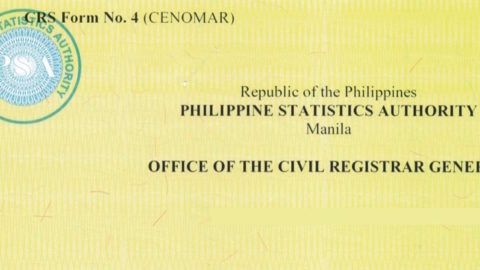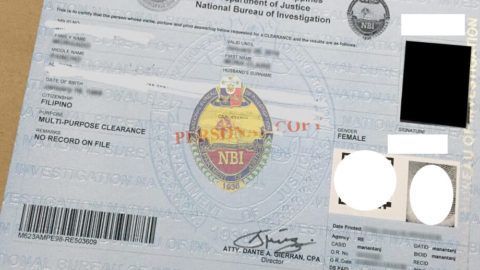CLIENT LOGIN
×Procesamiento de casos de USCIS: estados comunes y preguntas

Esta publicación cubrirá muchas de las preguntas comunes que rodean el Proceso de USCIS y los Estados de casos.
Visualización de cada proceso de USCIS
Para empezar, cada presentación de USCIS debe ser procesada por un oficial de USCIS. Es este oficial el que tiene control total sobre una presentación, NO:
- un solicitante
- un abogado
- un senador o congresista
- un miembro militar de alto rango
Además, normalmente uno no conoce al oficial que maneja su caso. Tampoco puedes hablar directamente con ese oficial.
Un oficial de inmigración es como cualquier otro oficial. Hagamos que sea más común. ¿Alguna vez te han robado algo? De lo contrario, imaginemos que su teléfono fue robado en un Walmart, sacado directamente de su carrito de compras.
Un detective dependería de un informe policial, imágenes de seguridad, fotos, testimonios, etc. El detective debe trabajar con numerosas personas para resolver el crimen. El detective no puede dar un tiempo estimado cuando (1) el criminal será atrapado, (2) cuándo se le devolverá el teléfono y (3) cuándo se completará la investigación. El detective termina la investigación “cuando termina”.
Lo mismo ocurre con un oficial de USCIS, el oficial de inmigración recibe “papel, formularios, evidencia”, pero luego debe coordinarse con otros oficiales, otras agencias, numerosos sistemas y realizar una investigación.
Nota: Las investigaciones no pueden ser apresuradas. Las solicitudes se manejan “por orden de llegada”.
¿Qué es primero llegado, primero servido?
Esa es una expresión común para el trabajo atrasado. Las solicitudes se procesan en el orden en que se reciben. Una presentación no puede ser acelerada (cortada en línea) a menos que sea de vida o muerte o en el mejor interés del gobierno.
Solicitudes comunes para agilizar / saltar en línea:
- El despliegue normalmente no agiliza la presentación, porque un miembro del servicio aún debe presentarse para el despliegue, con o sin cónyuge o familiar.
- Service Member está a punto de ser desplegado en Alemania durante 3 años. La autorización de seguridad del miembro del servicio necesita que el miembro del servicio se convierta en ciudadano estadounidense o que el miembro de la familia sea un residente permanente legal. Podría haber interés gubernamental aquí ya que afecta el trabajo.
- Veterano y Prisionero de Guerra, alguien que sirvió valientemente a los intereses de la nación, hace una solicitud final en su lecho de muerte para ver a su familiar una vez más antes de fallecer. El interés del gobierno se basa en intereses y servicios pasados. Esta solicitud puede ser acelerada.
Si no le interesa al gobierno, no espere que el gobierno acelere su presentación. Una solicitud de aceleración injustificada puede incluso retrasar su presentación si se sacó de línea o se dejó en el escritorio de un oficial que no procesa.
Información de contacto de USCIS
Hay dos tipos de oficiales cuando llama al Centro de Contacto de USCIS:
- Representantes de nivel uno que completan solicitudes en línea y proporcionan el estado del caso
- Representantes de nivel dos que son oficiales de inmigración en las oficinas de campo que pueden proporcionar mejores explicaciones a las preguntas, pero no pueden procesar su caso (ya que esa es la tarea de otro oficial en algún lugar de la nación)
Llamar a USCIS no significa que pueda hablar con un oficial de nivel 2, esa habilidad la determina un representante de nivel 1.
Si se encuentra dentro de los EE. UU., Puede llamar a USCIS aquí: 1-800-375-5283
Si se encuentra fuera de los EE. UU., Puede llamar a USCIS aquí: 212-620-3418
El estado del caso en línea es la misma información que obtendría al hablar con un representante de USCIS. El estado del caso de USCIS se puede encontrar aquí ingresando su número de recibo que se encuentra en la sección superior izquierda de su aviso de recibo en la siguiente página web: https://egov.uscis.gov/casestatus/landing.do
¿Cuándo puede comunicarse con un oficial de USCIS?
Normalmente puede comunicarse con un oficial de inmigración o un representante de nivel 2 en 3 situaciones:
- (Comunicación por escrito / correo) Cuando un oficial envía un aviso por escrito solicitando una respuesta a preguntas / consultas
- (Comunicación en persona) En una entrevista con un oficial de inmigración
- (Comunicación por escrito / electrónicamente) Fuera del tiempo de procesamiento normal, pero a través del sistema E-Request.
¿Contactar a USCIS ayuda a mi caso?
En breve, no.
Llamar a USCIS para conocer el estado de su caso no ayuda a acelerar su procesamiento. Solo indicaría la información proporcionada sobre el estado en línea, que se puede ver fácilmente en: https://egov.uscis.gov/casestatus/landing.do
Las ocasiones en que puede hablar con un oficial de nivel 2 es cuando el caso está fuera del tiempo de procesamiento de USCIS o hay problemas con el correo y un oficial de nivel 2 puede tener acceso al archivo o al sistema en el que se encuentra el archivo.
Si USCIS quiere más evidencia o requiere una explicación, un aviso de USCIS llegaría por correo y la respuesta a su solicitud también sería requerida por correo.
Los oficiales de inmigración están procesando la presentación, realizando la verificación de antecedentes e investigando muchos aspectos de una presentación. Cuando el oficial termina con la presentación, todos son notificados por el Aviso de USCIS.
¿Cómo verifico los tiempos de procesamiento?
consulte nuestra publicación de blog al respecto: /immigration/como-verifico-los-tiempos-de-procesamiento-de-uscis/
¿Qué son los estados de casos comunes?
- Mi caso fue recibido
- Mi caso aceptado por el USCIS Lockbox
- Mi tarifa de huella digital fue recibida
- Mi caso se actualizó para mostrar que se tomaron huellas digitales
- Mi solicitud de evidencia adicional fue enviada
- Mi solicitud de evidencia adicional fue recibida
- Mi caso está siendo revisado activamente
- Mi caso está en espera
- Mi caso está listo para ser programado para una entrevista
- Mi caso está programado para una entrevista
- Mi caso fue enviado para revisión de calidad basado en una recomendación de aprobación
- Mi caso fue aprobado
- Mi tarjeta me fue enviada
- Mi tarjeta fue recogida por el Servicio Postal de los Estados Unidos
- Mi tarjeta me fue entregada por la oficina de correos
- Mi caso fue enviado al Departamento de Estado
- Mi certificado de naturalización fue emitido
Según los estados de casos comunes, puede ver un patrón o una progresión de un caso a medida que se procesa a través del Sistema USCIS y muchos oficiales, ya sea para su aprobación o entrevista.
Puede encontrar más explicaciones sobre el estado del caso USCIS aquí: /immigration/estados-de-casos-comunes-de-uscis-una-explicacion-util/
Publicaciones de blog relacionadas
Descargo de Responsabilidad: El abogado o editor de un bufete de abogados pone a disposición este Blog solo con fines educativos, así como para brindarle información general y una comprensión general de la ley, no para proporcionar asesoramiento legal específico. Al utilizar este sitio de blog, comprende que no existe una relación abogado-cliente entre usted y el editor del Blog / Sitio web. El Blog no debe utilizarse como un sustituto de asesoramiento legal competente de un abogado profesional con licencia en su estado.
The post Procesamiento de casos de USCIS: estados comunes y preguntas appeared first on Fickey Martinez Law Firm.









Recent Blog Posts









Jacksonville Office
(910) 526-0066
Orange County, CA Office
13252 Garden Grove Blvd.
Suite 204-106
Garden Grove, CA 92843
DISCLAIMER – The information does not constitute legal advice and please be aware that neither this website nor the use of information from this website creates an attorney-client relationship.
© 2024 Fickey Martinez Law Firm. All Rights Reserved.
This website has been built to be accessible for all users. If you experience any difficulty in accessing this website, please contact us for assistance.


